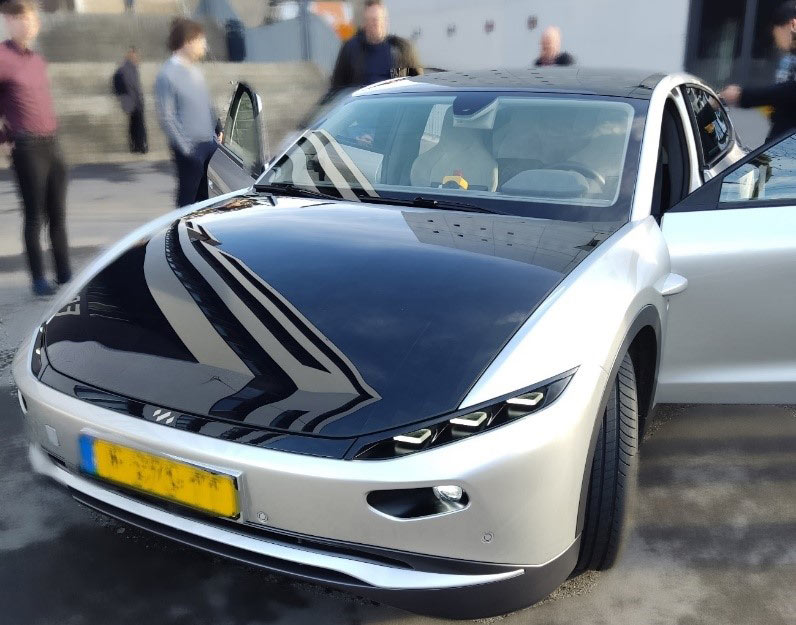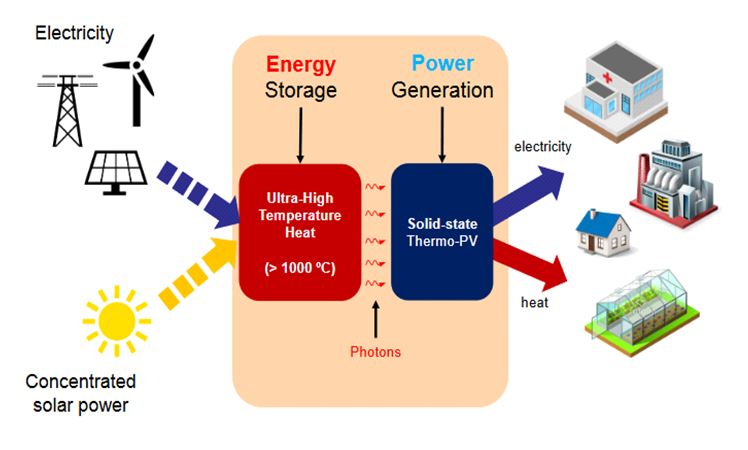Manufacturing a silicon solar cell involves a complex sequence to transform quartz extracted from a mine into a device that, when exposed to the sun, provides electricity in a cheap, reliable and long-lasting way. This is a challenge that requires the cooperation of the metallurgical, chemical and semiconductor industries.
The process begins with the carbothermic reduction of quartz in an arc furnace, at temperatures exceeding 1500°C, to obtain so-called metallurgical silicon, with a purity of 98-99%. Much higher purities are required (above 99.9999%!), for which the so-called Siemens process is used to transform metallurgical silicon into a liquid compound at room temperature, trichlorosilane, which allows it to be distilled and ultrapurified to the required levels, and then converted back into solid silicon.
It is not enough to have such a pure silicon, it is also required that the atoms are ordered forming an extensive crystalline network, for which the silicon is melted, at temperatures above 1400ºC, and then cool very slowly and controlled, in furnaces called growers, which give rise to blocks of silicon that are then cut into parallelepipeds approximately 1-2 meters long and 15 ×15 cm2 in area, and sliced with multiwire saws to produce silicon wafers in the 200-micrometer thickness range, which are the substrates on which the cells themselves are fabricated.
In a conventional solar cell (known as a BSF cell, from the acronym Back Surface Field) such a silicon wafer is given a surface treatment, phosphorus atoms are diffused into a thin region of the front side from a chemical precursor in a quartz furnace, and an anti-reflective layer of silicon nitride is deposited on it in a chemical vapor deposition reactor. Then, a silver-rich front metal mesh (the negative contact) and an aluminum-rich back layer with some silver-rich areas are deposited by a screen-printing process to make the positive contact.
The BSF cell has historically dominated production, but has very recently been overtaken by the PERC cell (Passivated Emitter and Rear Cell), in which the aluminum-rich back layer is replaced by a dielectric, i.e. insulating layer (usually aluminum oxide), which is perforated in specific areas to form a local aluminum-rich contact. This strategy allows the cell to be more efficient, exceeding the 20% limit of a BSF cell and reaching up to 23% in some industrial lines.
But the industry already has proposals ready to further increase efficiency above this value. Specifically, with what are known as “passivated contact” technologies, which basically deposit on both surfaces of the silicon wafer an ultra-thin dielectric (a few nanometers thick) and on it conductive layers of certain characteristics, so that the entire surface is passivated, and the flow of electrons is produced by tunneling effect. The most mature example of this technology, which has been on the market for a decade, is the so-called HIT (Heterojunction with Intrinsic Thin Layer) technology, in which the surface layers are made of amorphous silicon.
Another approach is the IBC (Interdigitated Back-Contacted Cell), in which both contacts (positive and negative) are on the back of the cell, thus avoiding the shading of the front metal mesh and taking advantage of the entire surface, maximizing photon absorption.
The efficiency record for a silicon cell is currently held by the company Kaneka, which combines the latter two approaches: with an IBC with passivated contacts using amorphous silicon, it achieves 26.7%.
Will this structure then reach the practical limit for a silicon cell? Work is already underway on the next generation of devices, that of tandem or multi-junction cells, in which one silicon cell will have another cell made of a different semiconductor with a wider bandgap, which will enable efficiencies of 30% or more to be achieved.
The race to increase efficiency continues.
References:
- A. Luque and S. Hegedus, “Handbook of photovoltaic science and engineering”, 2nd Ed. Wiley, West Sussex, 2011
- Chapter 5. Solar grade silicon feedstock
- Chapter 6. Bulk crystal growth and wafering for PV
- Chapter 7. Crystalline silicon solar cells and modules
- SW Glunz, R Preu, D Biro, “Crystalline silicon solar cells – state of the art and future developments”, in Comprehensive Renewable Energy, Vol. 1 (Elsevier, 2012)



